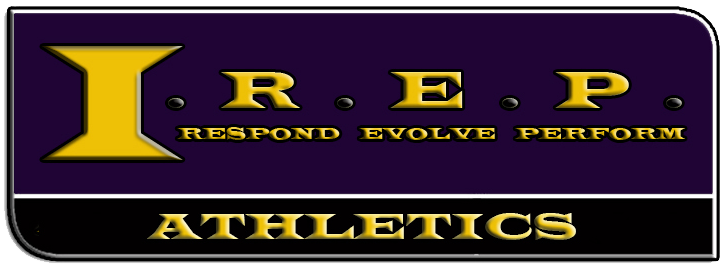Athletes and coaches are faced with the challenge of sculpting training regimens that not only peak performance when it matters most but also ensure consistent progress and recovery. Distinctly broken down into pre-season, in-season, and off-season phases, each period mandates a specific approach. To master the art of athletic preparation, adaptation is key; an exercise program must fluidly shift its focus to meet the evolving demands of each stage.
Pre-Season – Building the Foundation
The pre-season phase is the bedrock of an athlete’s annual training cycle—the time for laying down a sturdy foundation that will support the entire edifice of the forthcoming competitive season. During these crucial weeks or months, the groundwork is established not just for peak performance but also for resilience against the physical demands of high-intensity competition. A meticulously structured pre-season program can be the differentiator between a good and an exceptional athletic year.
Central to pre-season training is the focus on enhancing overall strength and conditioning. This is the time to concentrate on developing foundational physical attributes such as muscular strength, cardiovascular endurance, flexibility, and balance. Athletes often engage in weight training with moderate loads, gradually building the resistance to stimulate muscle growth and increase raw power without overtaxing the body. Such strength-building work lays the groundwork for later phases and is essential for athletes to execute their sport-specific tasks effectively.
 Alongside building strength, pre-season is where endurance gets its due attention. This isn’t about the sharp, explosive energy that will be refined closer to competition, but the deep well of cardiovascular and muscular endurance. Fitness regimens calibrated for extended periods, such as long runs, swims, or bike rides, help in creating a long-lasting engine for the athlete. Subsequently, this endurance base is crucial when they need to sustain efforts over an entire match or through a multi-day tournament.
Alongside building strength, pre-season is where endurance gets its due attention. This isn’t about the sharp, explosive energy that will be refined closer to competition, but the deep well of cardiovascular and muscular endurance. Fitness regimens calibrated for extended periods, such as long runs, swims, or bike rides, help in creating a long-lasting engine for the athlete. Subsequently, this endurance base is crucial when they need to sustain efforts over an entire match or through a multi-day tournament.
Flexibility and mobility exercises also take precedence in pre-season training as they are critical for a range of motion and injury prevention. Dynamic stretching, yoga, or Pilates might be incorporated to increase flexibility, enhance performance, and reduce the risk of strains and sprains. This focus on pliability is as much about physical preparedness as it is about creating a buffer against injury during the more intense in-season phase.
The pre-season phase is the opportune time for athletes to concentrate on sport-specific skills and tactics without the looming pressure of imminent competition. Technique refinement is a meticulous process, and the relative calm of the pre-season allows for the incorporation of new skills and the improvement of existing ones. Athletes and coaches can dissect past performance, identify areas for improvement, and methodically work through them.
Athletic training during the pre-season is not just about the individual, especially in team sports settings. It is a period characterized by team-building and establishing a collective rhythm. Players and coaches have the time to synchronize their strategies, develop play patterns, and understand each other’s strengths and weaknesses. Any new players are integrated into the team’s fabric, ensuring that when the season begins, the unit moves as a cohesive whole.
The pre-season phase is characterized by a progressive increase in the volume and intensity of training. This gradual ramp-up allows the body to adapt to the demands being placed upon it and prepares the athlete for the competitive stress ahead. Incremental progression also helps minimize the risk of overtraining and gives the body time to recover as it adapts, thus building a more formidable physique primed for the challenges to come.
In-Season – Maintaining and Maximizing Performance
The pre-season’s hard work must now translate into performance on the field, court, or track. This period is defined by an athletic juggling act, where maintaining the gains forged in pre-season, staying sharp for competition, and warding off injuries are all part of the daily grind. The fine-tuning of the in-season regimen is what can keep an athlete in their prime and help the team secure wins throughout the season.
In-season training is less about building up and more about maintenance and fine-tuning. During this time, athletes aim to maintain the muscle strength and conditioning levels they developed during the pre-season while ensuring they do not overexert themselves, which could lead to fatigue or injury. Workouts tend to be shorter in duration but high in intensity, focusing on preserving muscle function and sport-specific explosiveness. This strategic approach aligns with the need to maintain a high level of performance throughout the season.
Consistency is KEY during this phase. Athletes need to consistently engage in strength training, but the focus pivots toward the maintenance of strength rather than the gain. It’s about striking a balance where enough stimulus is provided to maintain muscular and neuromuscular adaptations without causing undue fatigue. The art here is to keep the training challenging enough to retain muscle memory and strength but not so strenuous that it depletes the athlete ahead of their competition.
The in-season phase also demands a heightened awareness of recovery procedures due to the continuous stress of competitions and practice. Recovery becomes a cornerstone of in-season practice because, without adequate rest and treatment, the risk of injury spikes and performance can wane. Implementing effective recovery strategies—like active recovery sessions, sufficient sleep, proper nutrition, hydration, and perhaps even more advanced techniques such as cryotherapy, compression therapy, and hydrotherapy—can significantly enhance an athlete’s ability to perform repeatedly at a high level.
Injury prevention is another primary focus of in-season training. High-level competition places the body under significant strain, and any undetected weakness can lead to injury. Consequently, exercises that build resilience in joints, tendons, and muscles are a regular feature of in-season training programs. Core strength, proprioception, and stability training are often emphasized to reduce the occurrence of common sports injuries, such as strains and sprains.
Tactical preparation and psychological readiness are also critical components of in-season training. As athletes face various opponents and competitions, they must adjust and fine-tune their approach to their sport. Coaches may implement specific training sessions that simulate match conditions or focus on particular scenarios that could occur in upcoming games.
Off-Season – Recovery and Growth
Following the climax of the competitive season comes a period of lower activity, often referred to as the off-season. During this time, the focus shifts toward recovery and addressing any injuries that may have surfaced. Following a brief period of minimal activity to allow mental and physical relaxation, athletes gradually return to training with an eye on correcting imbalances and enhancing overall athletic prowess.
The off-season is often the most variable phase, tailored to individual needs more so than the other stages. Some athletes may use this time to gain mass, and strength, or address particular weaknesses exposed during the season. Training can include a mix of cross-training to prevent burnout and promote overall physical development, along with a gradual reintroduction to sport-specific training regimes.
Conditioning during the off-season moves away from maintenance and towards advancement. Athletes work on developing power and agility, often increasing the load and intensity of exercises to challenge their bodies in new ways. The off-season is also an ideal time to explore new training methods or incorporate alternative sports to keep the body responsive and engaged.
As the off-season progresses, the cycle restarts, transitioning back towards pre-season preparation. The lines between these phases can often blur, with targeted training and tactical considerations present throughout. Athletes must give their bodies the right stimulus at the right time to foster peak performance.
Creating a fluid and adaptable training plan that respects the demands of each season’s phase is no small feat. It requires a keen understanding of physiology, a deep commitment to personal growth, and a drive toward balanced, holistic athletic development. By strategically varying the focus of training cycles, athletes can ensure that they enter each season prepared, peak at the right time, and have ample opportunity for recovery and growth.
